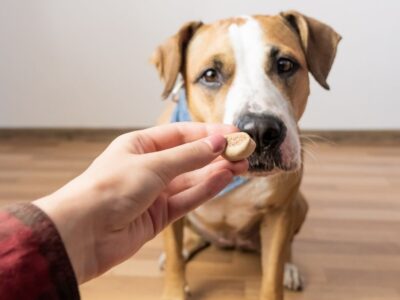Separation anxiety in dogs is a prevalent issue, often manifesting through destructive behaviour or distress when left alone. This condition impacts the well-being of our furry friends and strains the bond we share with them. Understanding and addressing separation anxiety is vital for maintaining a harmonious relationship with our canine companions.
Understanding Separation Anxiety in Dogs
At its core, separation anxiety is a stress response. Dogs are pack animals by nature, and being left alone contradicts their instinctual need for companionship. Signs of this condition can vary from mild unease to severe panic, with symptoms including excessive barking, destructive behaviour, and even self-harm.
Proactive Strategies to Alleviate Anxiety
· Creating a Safe Space
Establish a comforting area in your home where your dog feels secure. This could be a crate or a designated room with their favourite toys and bedding. The key is to make this space a positive and stress-free zone.
· Gradual Desensitization
Begin by leaving your dog alone for short periods and gradually increase the duration. This method helps them understand that being alone is not permanent and you will return.
· Interactive Toys and Puzzles
Engage their minds with interactive toys that require problem-solving. These activities not only keep them occupied but also provide mental stimulation, reducing anxiety.
· Consistent Routine
Dogs thrive on routine. Establishing a consistent meal schedule, walks, and playtime can significantly reduce stress. Predictability offers a sense of security.
· Exercise
Regular physical activity is crucial. A well-exercised dog is typically more relaxed and less prone to anxiety. Tailor the training to your dog’s age, breed, and health.
· Professional Help
Consulting a veterinarian or a professional dog trainer specializing in behavioural issues is recommended in severe cases. They can offer tailored strategies and, if necessary, medication to help manage anxiety.
Recognizing the Signs Early
Early intervention is critical in managing dogs with separation anxiety. Be observant of your pet’s behaviour and seek professional advice if you notice any concerning signs. Remember, each dog is unique, and what works for one may not work for another. Patience and persistence are essential in this journey.
Conclusion
Dealing with separation anxiety in dogs requires understanding, patience, and proactive strategies. You can significantly reduce your pet’s stress by creating a safe environment, implementing a routine, engaging their minds, and seeking professional help. Remember, the goal is not just to manage the symptoms but to enhance the quality of life for both you and your beloved dog. With these strategies, you can bridge the gap caused by separation anxiety, fostering a stronger, more resilient bond with your furry companion.













Comments